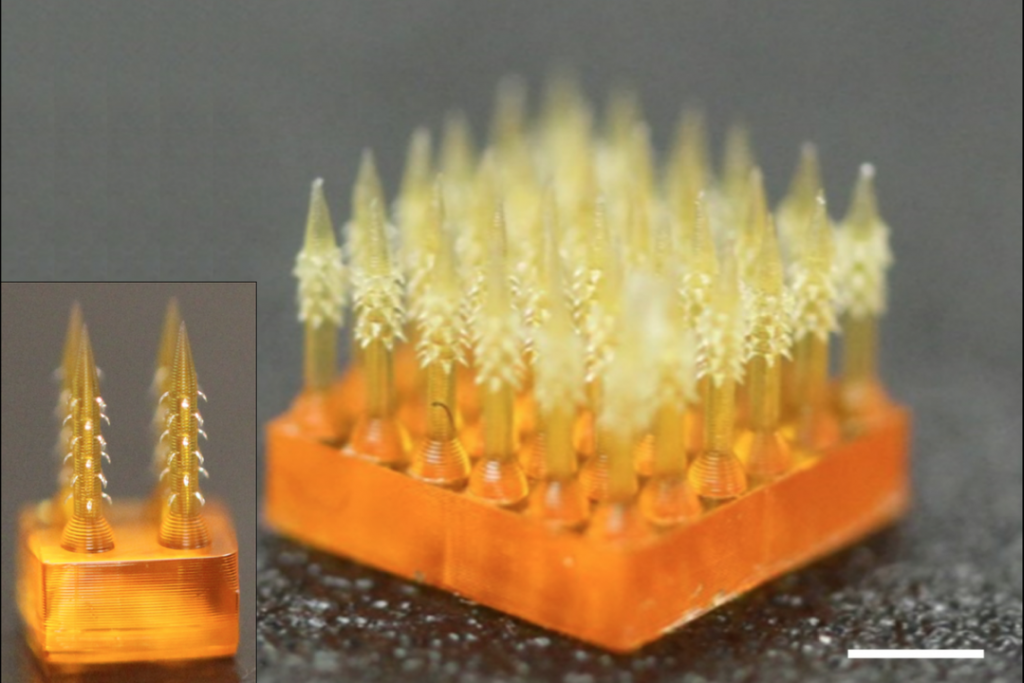
The research team at Rutgers University has made needles that have so far reversed common sense with a new 3D printing technology. The injection needle with fine thorns that pests and parasites have are molded through 4D printing.
This time, it is a kind of micro-needle patch, but in nature, such a needle has the characteristic that makes it difficult to get stuck and get stuck under the skin of the prey without pain. In the study focusing on this, the drug was dissolved through a needle and the contents were gradually released. The dissolved drug flows around the skin cells into the blood. This technology is 3D printing using smart materials that are programmed to change shape after molding, and the research team calls this 4D printing. It is explained that the reason for 4D is that what was molded changes over time by adding the concept of time to 3D, which is three-dimensional.
A small needle is a microneedle patch when a 4D printed patch-like patch is attached to the body for a while. Rather than attaching to the body, it should be considered to be included in the body, but it stays under the skin and dissolves while releasing the drug.
This needle is said to have 18 times stronger tissue adhesion than regular needles. Since it is not taken out quickly, it is expected that blood collection where needles are administered several times depending on the purpose will be more convenient. Related information can be found here .


















Add comment